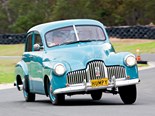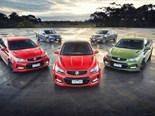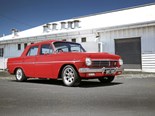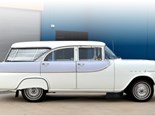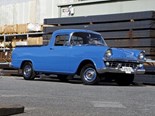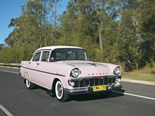Holden FE Station Sedan - Iconic Holdens #2
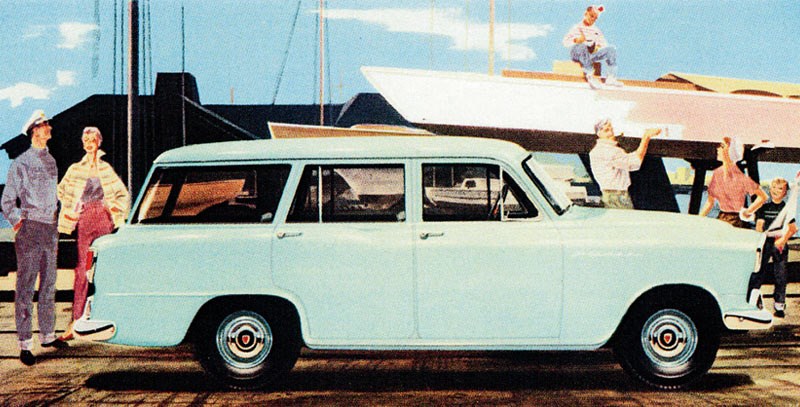

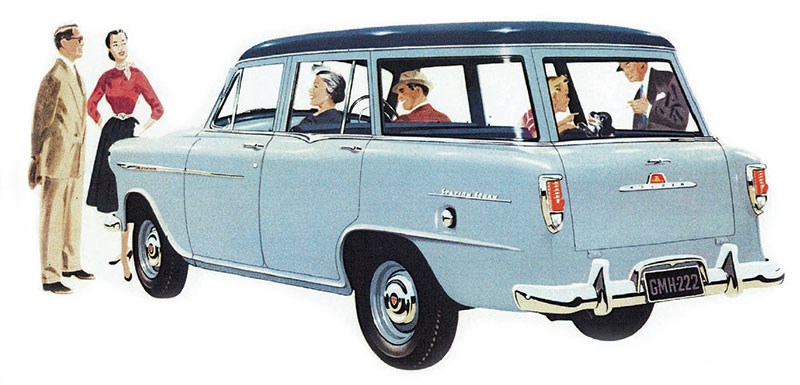

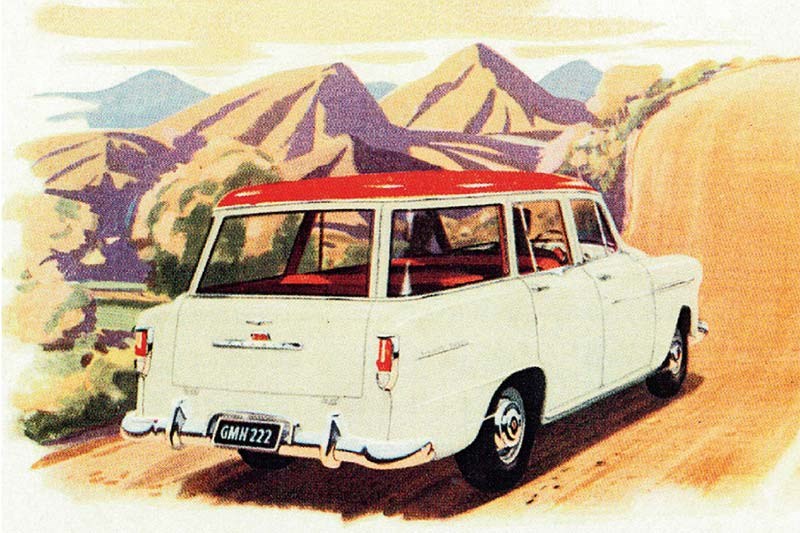

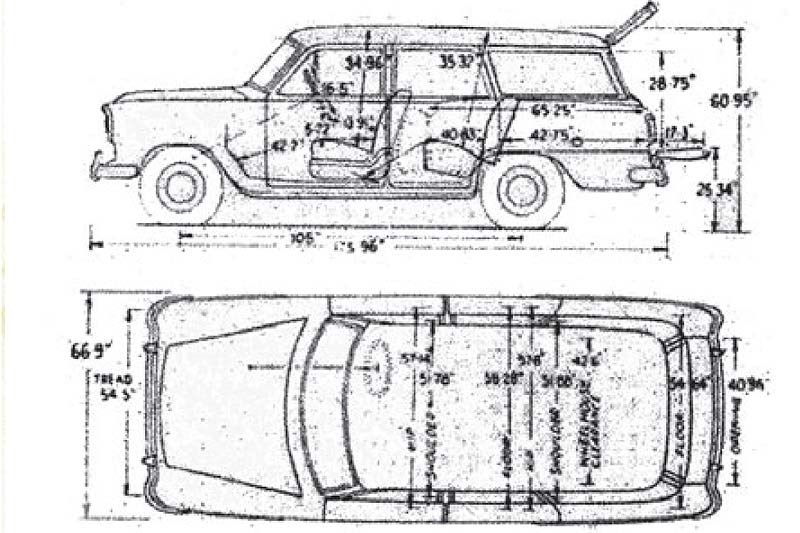


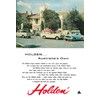

|

|

|

|

|
The FE station sedan was a game changer for Holden
Iconic Holdens #2: FE Station Sedan
If the original Holden 48-215 may be viewed as almost an automotive miracle, being an all-new car developed specifically for Australia and uniquely suited to the task, then the 1957 FE Station Sedan was Holden’s second near-miracle.
How many Baby Boomers will remember (as I do) the enormous excitement provoked by the arrival of the long-awaited three-box FE Holden in July 1956? By then, the familiar shape of the Humpy Holdens 48-215 (‘FX’) and FJ was breeding contempt as we sought a sleeker streamline: cars designed just a few years after the first Holden in the immediate postwar era had faired-in mudguards, boots which had lost their droop; height dropped, wheelbase and overall length grew. And the US cars that set the international styling trends, sat closer to the road.
By 1957 when the FE Station Sedan arrived, Australia’s Baby Boomers were demanding more space for their possessions, especially on a family camping holiday or trip to the beach. This new and extraordinarily inexpensive wagon could carry far more stuff, say, than the FJ Special sedan or Austin A40 Devon which might have preceded it as the family car. For many families, an FE Holden was only the second car they had ever owned. For many others, of course, it was the first.
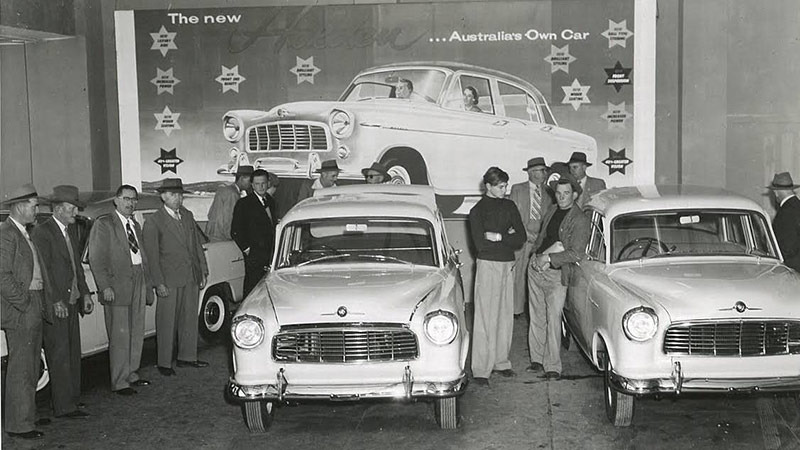
The rate of car ownership seemed to be expanding exponentially and in parallel with the erection of new weatherboard and brick veneer houses in what had been the outer reaches of Australian cities. (The Wright family still took occasional Sunday drives in the late 1950s and we didn’t have to go far east down Burwood Road in what is now almost inner Melbourne before we could announce we were ‘in the country’.)
A total of 155,161 FE Holdens were made in less than two years while sales of Holdens in the preceding eight years were significantly fewer than 300,000!
The era of the second family car was still – for most – about half a decade into the future. So, if only one vehicle was the family’s lot, then why not a Station Sedan with all that extra space and versatility? Perhaps, too, that family might have been building a new house in the Shire of Mulgrave/Waverley in Melbourne’s east. In 1947 the shire had just 1140 dwellings. By 1954 there were 5135 and in 1961 there were 11,364. How handy would the FE Station Sedan have been during this process for the owner-builder (as so many were) with its fold-flat rear seat and two-piece tailgate?

With only one car in the family, often it would be driven by a woman during the working week. GM-H pitched some advertising campaigns directly at women, one being headed ‘More beauty for your money’. Two-tone paintwork, which was introduced on the FJ Special, was used to great effect on the FE with some lovely combinations.
Despite its newfound glamour, the FE Holden was just as well suited to rugged Australian conditions as its predecessors – arguably more so because constant running changes had been made to the 48-215 and FJ, and also because the FE’s higher compression (for a claimed 70 instead of 60 bhp) engine displayed an even more impressive ability to get into top gear at the earliest opportunity (now about 10 mph instead of 15) and pull all the way to 80 or maybe 82, although most Australian highway driving in the mid-1950s was at speeds below 70.
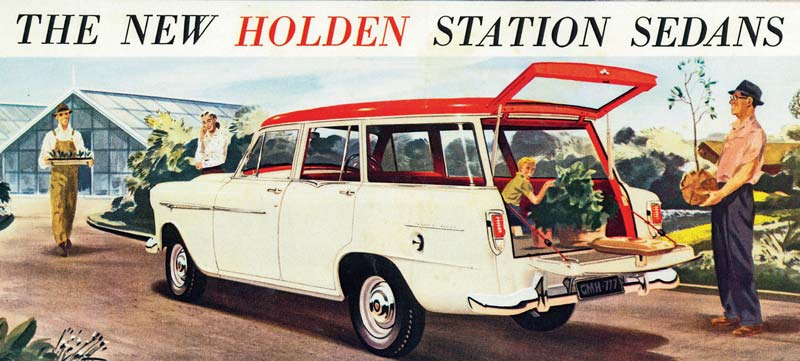
Automatic transmissions were quite rare here in 1957 and the first Holden to get one would be the EK in 1961, but the manual FE Holden seemed to do almost the same job without the complexity. Non-synchronised first was normally used just to get rolling while second was low enough for almost every other circumstance, even if the clutch copped some slipping.
Other FE advances included 12-volt electrics, recirculating ball steering, more interior room (thanks to the wider body and longer wheelbase), a bigger boot and pendant pedals. The new 13-inch wheels were shod with balloon tyres to give a rolling circumference not much lower than the FJ’s on 15s – smaller diameter wheels were deemed to make cars of the era look sleeker.
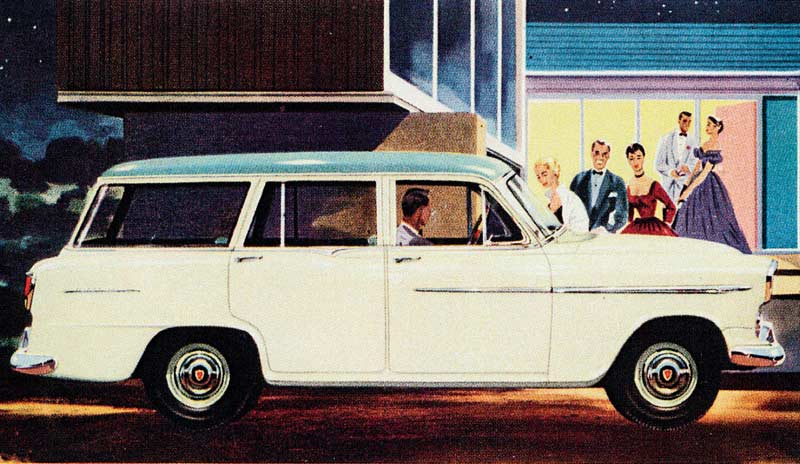
Part of the brilliance of stylist Alf Payze’s work with the FE is that he retained the nine inches of ground clearance deemed essential by the engineers. The lines of the FE were so beautifully balanced and modern that it looked as low and sleek as any American models of the time despite this elevated ride height – contemporaneous Chevies had seven inches of ground clearance and far worse approach and departure angles as a result.
The FE Special Station Sedan was to 1957 Aussie motoring pretty much what the Toyota Prado is these six decades later. But arguably more Holden drivers took advantage of their Holdens’ remarkable ability to cover high-crowned roads and rutted tracks: many Prados rarely leave suburbia.
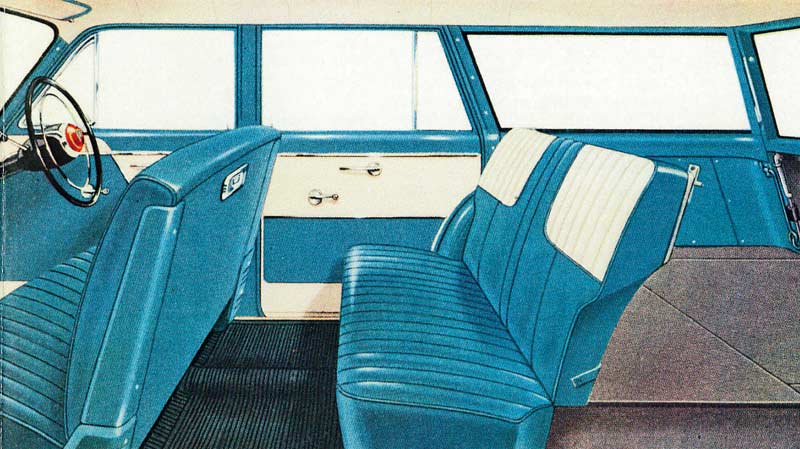
The Australian automotive ethos created by the original Holden and carried through until at least the first series Commodores (during testing of prototypes the German engineers said the Flinders Ranges roads were for trucks, not cars) was closer to that of Kenya than England. The SUV had yet to be invented. Typical English cars could not withstand hard rural use and even the locally assembled Ford Consuls, Zephyrs and Customs gave trouble in the 1950s (and so did the XK Falcon!). Only the Volkswagen and Peugeot bore any comparison with the Holden for ruggedness.
In 1957 comparatively few wagons were monocoques with the norm in the US being body on frame (for sedans too) with honourable exceptions such as the newly launched Rambler. British wagons like the Zephyr Mark 2 got custom-made bodies. When Ford Australia developed its own Zephyr wagon, the prototype used the FE’s special long roof.
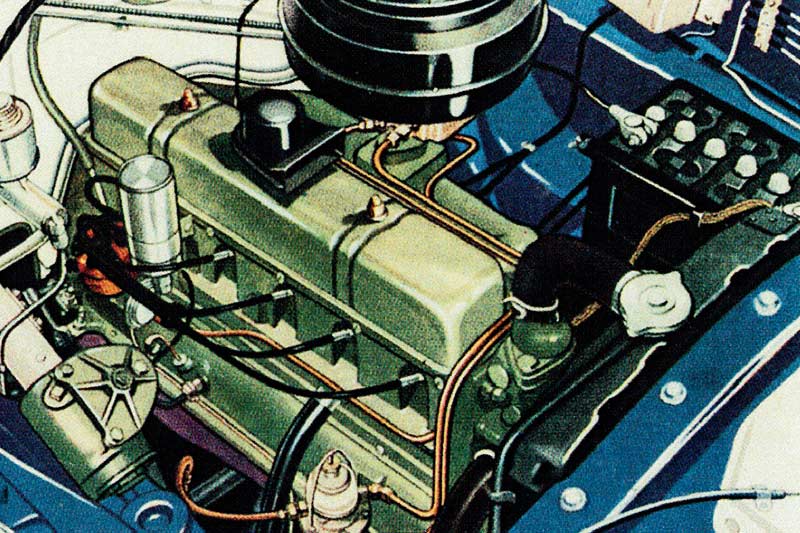
While the 48-215 had been essentially a one-trick pony until the utility joined the circus, the FE was outstanding in the world for the number of types spun off the same basic design: Standard and Special sedan and Station Sedan, Business sedan, utility and panel van. All were built on the same wheelbase, two inches longer than the 48-215/FJ’s and the same as the VB Commodore’s at 2667 mm. Here were true economies of scale. Small wonder that in 1958, the year of the FC’s introduction, Holdens accounted for slightly more than 50 per cent of Australia’s total passenger car market.
In summary, the undoubted highlight of the FE range was the Station Sedan for its unprecedented blend of toughness, beauty, versatility, spaciousness, performance and overall economy of ownership. Just as the 48-215 had been the best car in the world for Australia in 1948, the Special Station Sedan probably deserves that title for 1957 – although you’d have to consider the Peugeot 403 wagon a worthy rival unless towing was part of the family’s motoring equation.
SPECIFICATIONS
1957 Holden FE Station Sedan
BODY: Five-door steel-monocoque station wagon
WEIGHT: 1140kg
ENGINE: 2172cc (132.5ci) pushrod OHV inline-6
TRANSMISSION:
3-speed column-shift manual.
Synchro – top and second.
SUSPENSION:
Ind – coil spring, unequal length wishbones, tubular shockers (f)
Live axle – semi-elliptic leaves with tubular shockers (r)
BRAKES: Drums (f/r)
POWER: 52kW (70hp) @ 4000rpm
TORQUE: 149Nm @ 1200rpm
- Iconic Holdens #8: Torana LC & LJ XU-1 and Torana A9X
- Iconic Holdens #7: VT Commodore
Unique Cars magazine Value Guides
Sell your car for free right here
Get your monthly fix of news, reviews and stories on the greatest cars and minds in the automotive world.
Subscribe

.jpg)







